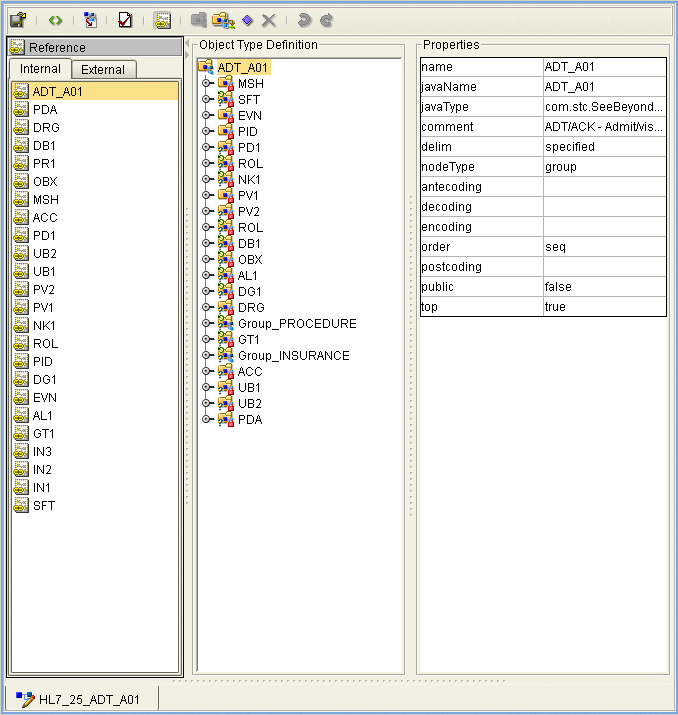Viewing an OTD Using the OTD Editor
The OTD Editor displays the structure of a selected Object Type Definition (OTD) and allows you to verify its operation with a built-in tester. You can also use the editor to create and modify User-Defined OTDs.
 To View an OTD
To View an OTD
To view the HL7 Generic OTD or an HL7 Library OTD (if you are using the HL7 adapter in conjunction with the Sun HL7 OTD Library) using the OTD Editor, perform the following:
-
Expand the Sun OTD Library directory, the HL7 directory, and the folder for the appropriate HL7 Library version from the Project tree in Java CAPS.
Only the version or versions you install will be displayed in your build.
Note –The OTDs available under OTD Library in the Project Editor are protected (read-only).
-
Double-click the OTD in its current location to view the OTD in read-only mode.
 To Copy an OTD to the Project
To Copy an OTD to the Project
-
Copy and paste the OTD to your Project to view the OTD in an editable mode.
-
Right-click the OTD and select Copy from the shortcut menu.
-
Right-click your Project and select Paste from the shortcut menu.
The OTD is added to your Project on the Project Explorer tree.
-
Double-click the copied OTD to view the copied OTD.
The editable OTD appears in the OTD Editor. Notice that for the Library OTDs, the OTD segments are still write protected. The OTDs properties can only be modified from the Root node at this point.

-
Select any of the OTDs nodes or sub-nodes to see the nodes properties displayed in the editor’s Properties pane from the editor’s Object Type Definition pane.
For an overview of Object Type Definitions, OTD structure, and the OTD Editor, see the Sun Enterprise Service Bus User’s Guide.
- © 2010, Oracle Corporation and/or its affiliates
